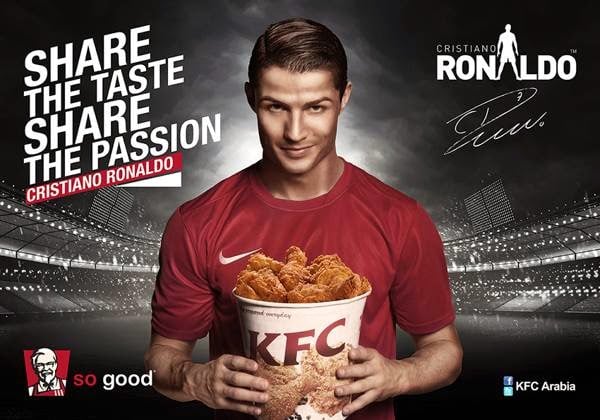Basic Persuasion Techniques
1. AssociationThis persuasion technique tries to link a product, service, or idea with somethingalready liked or desired by the target audience, such as fun, pleasure, beauty, security, intimacy,success, wealth, etc. The media message doesn’t make explicit claims that you’ll get these things;the association is implied. Association can be a very powerful technique. A good ad can create astrong emotional response and then associate that feeling with a brand.Example:

Reason: Use association sentences like "Feul up, Feel Good"
2. Bandwagon. Many ads show lots of people using the product, implying that "everyone is doingit" (or at least, "all the cool people are doing it"). No one likes to be left out or left behind, and these ads urge us to "jump on the bandwagon.”
Example:
: http://thevisualcommunicationguy.com/wp-content/uploads/2017/09/Bandwagon-Appeal-Advertising-4.png
http://thevisualcommunicationguy.com/wp-content/uploads/2017/09/Bandwagon-Appeal-Advertising-4.png
Reason: use bandwagon sentence like " America's favorite mascara!"
3. Beautiful People. Beautiful people uses good-looking models (who may also be celebrities) toattract our attention. This technique is extremely common in ads, which may also imply that we’ll look like the models if we use the product.
Example: http://dryxk2q3dvf87.cloudfront.net/wp-content/uploads/2012/12/chanel-beauty-ss-2012-monika-jagaciak2.jpg
http://dryxk2q3dvf87.cloudfront.net/wp-content/uploads/2012/12/chanel-beauty-ss-2012-monika-jagaciak2.jpg
Reason: Use beautiful model to make customers interest and want to buy it
4. Bribery. This technique tries to persuade us to buy a product by promising to give us somethingelse, like a discount, a rebate, a coupon, or a "free gift.” Sales, special offers, contests, andsweepstakes are all forms of bribery. Unfortunately, we don’t really get something for free -- part ofthe sales price covers the cost of the bribe.
Example:  https://annramadhani.files.wordpress.com/2015/01/20110412_02.jpg
https://annramadhani.files.wordpress.com/2015/01/20110412_02.jpg
Use bribery sentence like "buy 1, get 1 free!"
5. Celebrities. (A type of Testimonial – the opposite of Plain folks.) We tend to pay attention tofamous people. Ads often use celebrities to grab our attention. Byappearing in an ad, celebrities implicitly endorse a product; sometimes the endorsement is explicit.Many people know that companies pay celebrities a lot of money to appear in their ads.
Example: https://www.falcon.io/wp-content/uploads/2017/11/kfc-world-cup-ad-2.jpg
https://www.falcon.io/wp-content/uploads/2017/11/kfc-world-cup-ad-2.jpg
Reason: Use celebrity (the celebrity is an athelete- Christiano Ronaldo) to promote the product.
6. Experts.(A type of Testimonial.) We rely on experts to advise us about things that we don’tknow ourselves. Scientists, doctors, professors and other professionals often appear in ads andadvocacy messages, lending their credibility to the product, service, or idea being sold. Sometimes,“plain folks” can also be experts, as when a mother endorses a brand of baby powder or aconstruction worker endorses a treatment for sore muscles.Example:

Reason: Use a dentist testimonials to promote their product
7. Explicit claims. Something is "explicit" if it is directly, fully, and/or clearly expressed ordemonstrated. For example, some ads state the price of a product, the main ingredients, where itwas made, or the number of items in the package – these are explicit claims. So are specific,measurable promises about quality, effectiveness, or reliability. Explicit claims can be proven true or false through close examination or testing, and if they’re false,the advertiser can get in trouble.
Example:
htps://i.ytimg.com/vi/dn1qnP8-Goc/maxresdefault.jpg
Reason: they show that their product can make your skin born again
8. Fear. This is the opposite of the Association technique. It uses something disliked or feared bythe intended audience to promote a "solution.” Adsuse fear to sell us products that claim to prevent or fix the problem.
Example:
https://pancreaticcanceraction.org/wp-content/uploads/2015/01/Kerry-11.png/Reason: Use breast cancer patient to make everyone to be aware about it
9. Humor. Many ads use humor because it grabs our attention and it’s a powerful persuasiontechnique. Advertisers make us laugh and then show us their productor logo because they’re trying to connect that good feeling to their product. They hope that when wesee their product in a store, we’ll subtly re-experience that good feeling and select their product.



Comments
Post a Comment